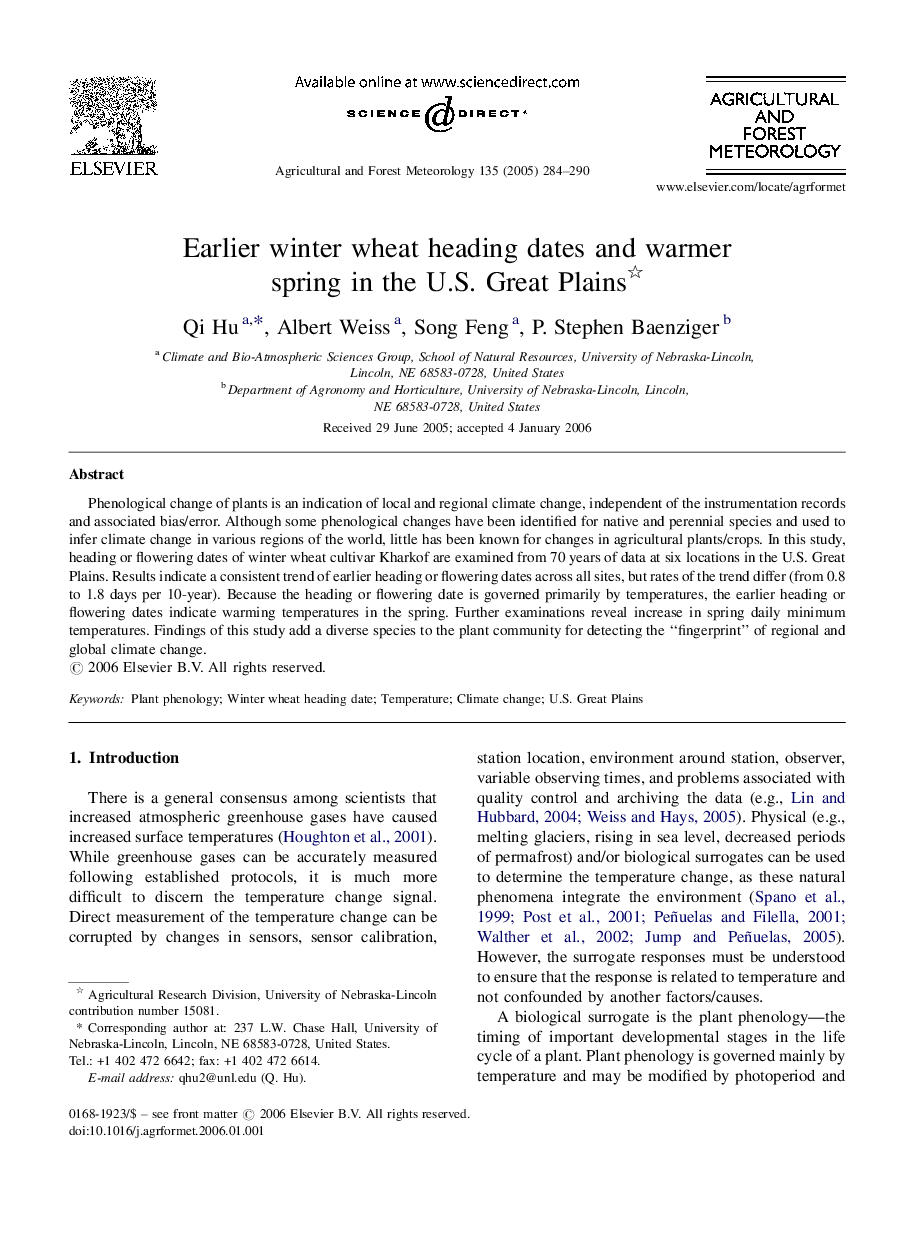| Article ID | Journal | Published Year | Pages | File Type |
|---|---|---|---|---|
| 9619394 | Agricultural and Forest Meteorology | 2005 | 7 Pages |
Abstract
Phenological change of plants is an indication of local and regional climate change, independent of the instrumentation records and associated bias/error. Although some phenological changes have been identified for native and perennial species and used to infer climate change in various regions of the world, little has been known for changes in agricultural plants/crops. In this study, heading or flowering dates of winter wheat cultivar Kharkof are examined from 70 years of data at six locations in the U.S. Great Plains. Results indicate a consistent trend of earlier heading or flowering dates across all sites, but rates of the trend differ (from 0.8 to 1.8 days per 10-year). Because the heading or flowering date is governed primarily by temperatures, the earlier heading or flowering dates indicate warming temperatures in the spring. Further examinations reveal increase in spring daily minimum temperatures. Findings of this study add a diverse species to the plant community for detecting the “fingerprint” of regional and global climate change.
Related Topics
Physical Sciences and Engineering
Earth and Planetary Sciences
Atmospheric Science
Authors
Qi Hu, Albert Weiss, Song Feng, P. Stephen Baenziger,
